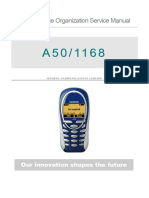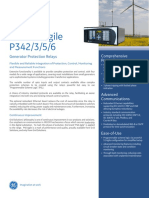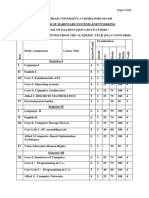0% found this document useful (0 votes)
10 views6 pagesComputer Networks Notes
The document provides an overview of key concepts in computer networks, including the Domain Name System (DNS), IP addressing, network security, and the OSI model. It differentiates between terms like subnetting and supernetting, protocols and standards, and discusses various types of data communication and network topologies. Additionally, it covers transmission media and bandwidth utilization techniques.
Uploaded by
sasoliumair70Copyright
© © All Rights Reserved
We take content rights seriously. If you suspect this is your content, claim it here.
Available Formats
Download as PDF, TXT or read online on Scribd
0% found this document useful (0 votes)
10 views6 pagesComputer Networks Notes
The document provides an overview of key concepts in computer networks, including the Domain Name System (DNS), IP addressing, network security, and the OSI model. It differentiates between terms like subnetting and supernetting, protocols and standards, and discusses various types of data communication and network topologies. Additionally, it covers transmission media and bandwidth utilization techniques.
Uploaded by
sasoliumair70Copyright
© © All Rights Reserved
We take content rights seriously. If you suspect this is your content, claim it here.
Available Formats
Download as PDF, TXT or read online on Scribd
/ 6





















































































